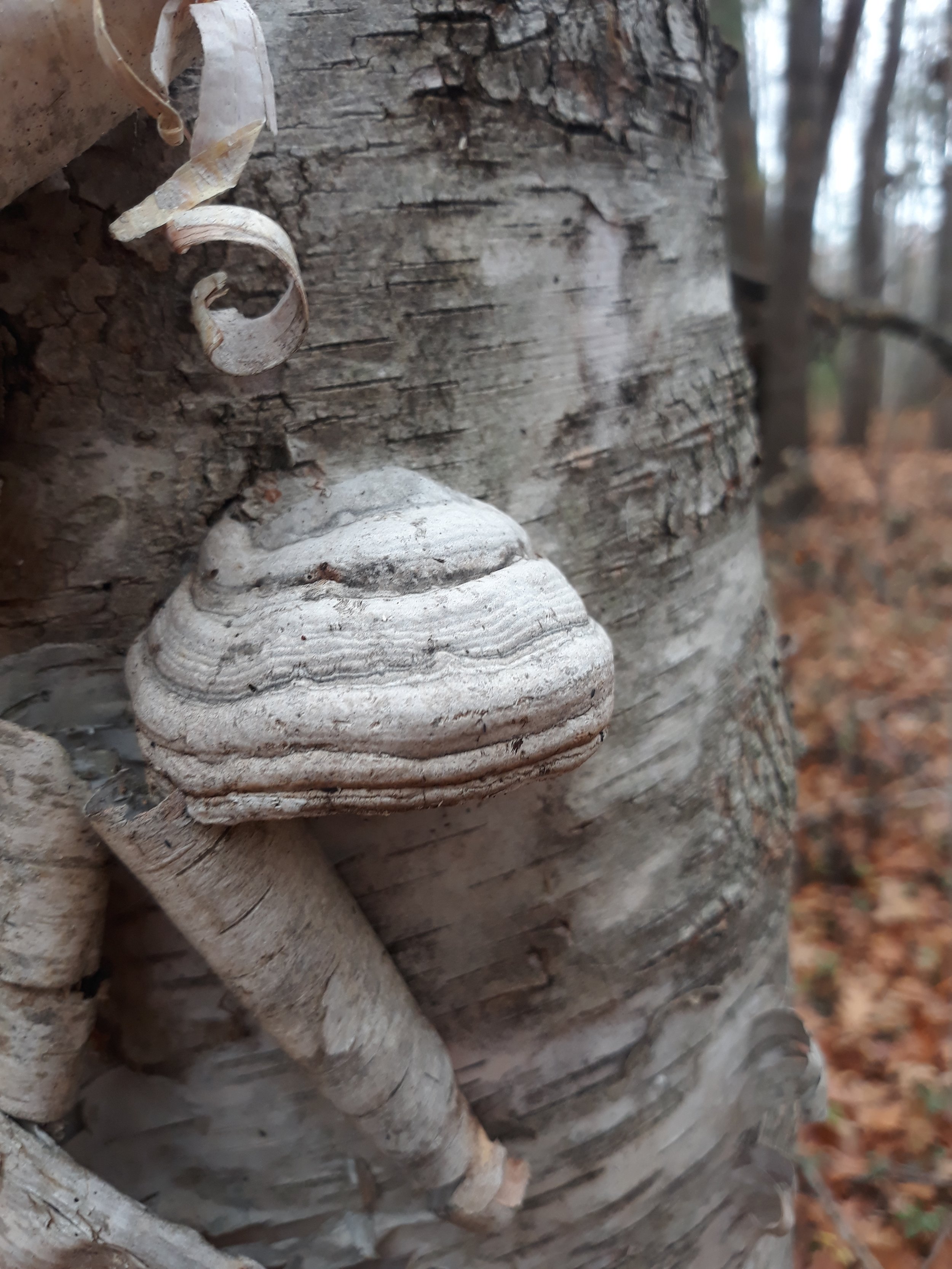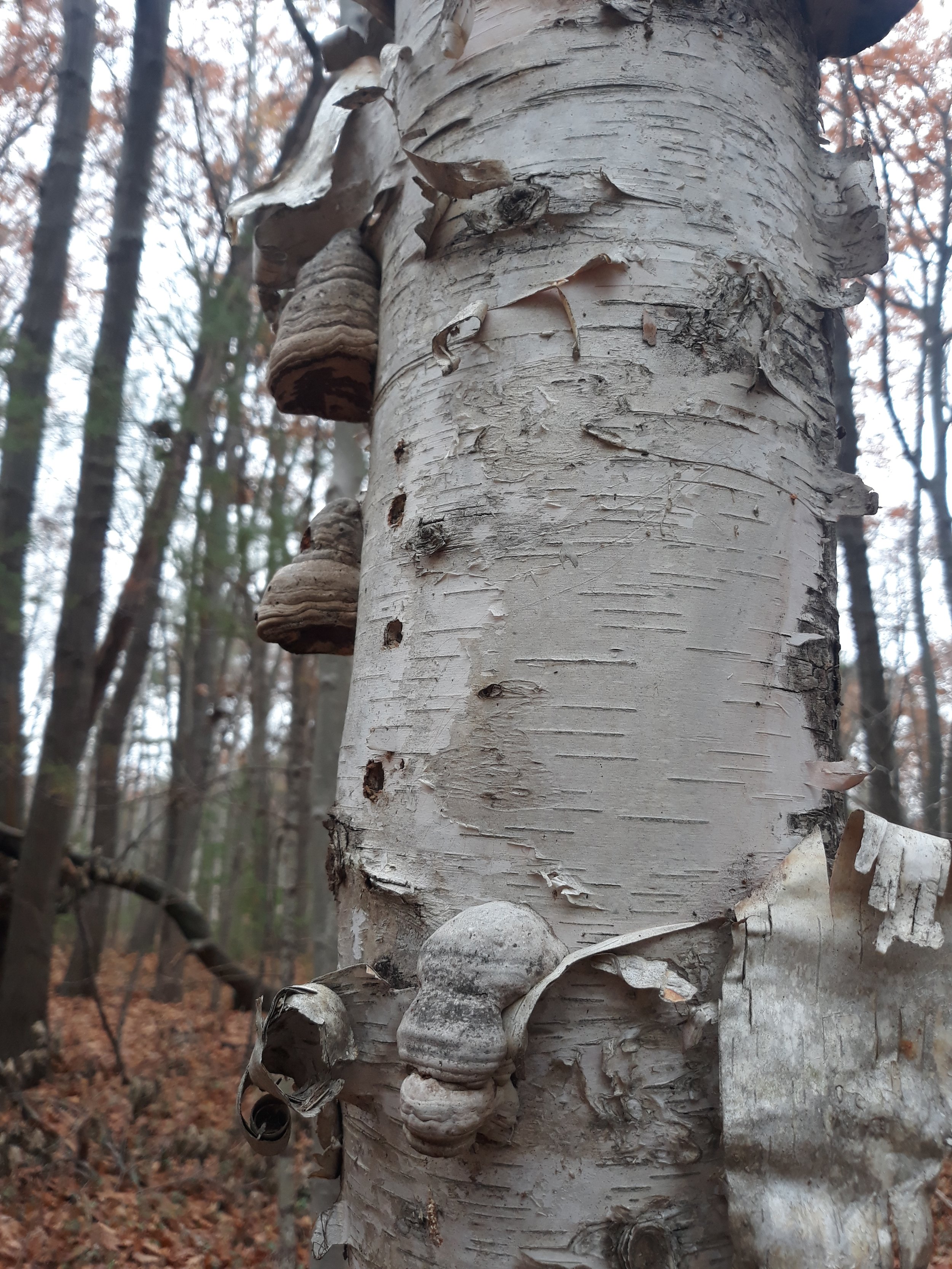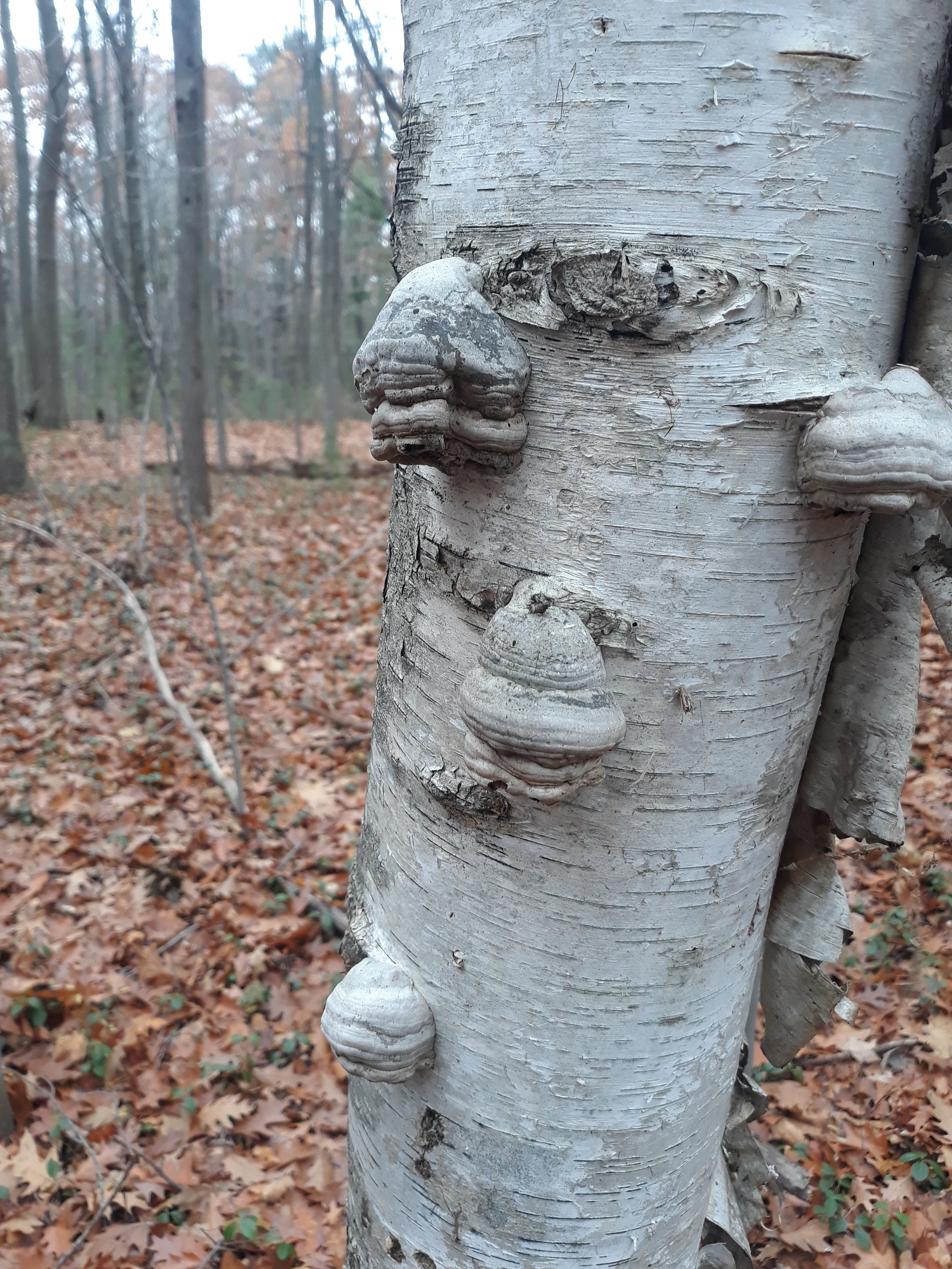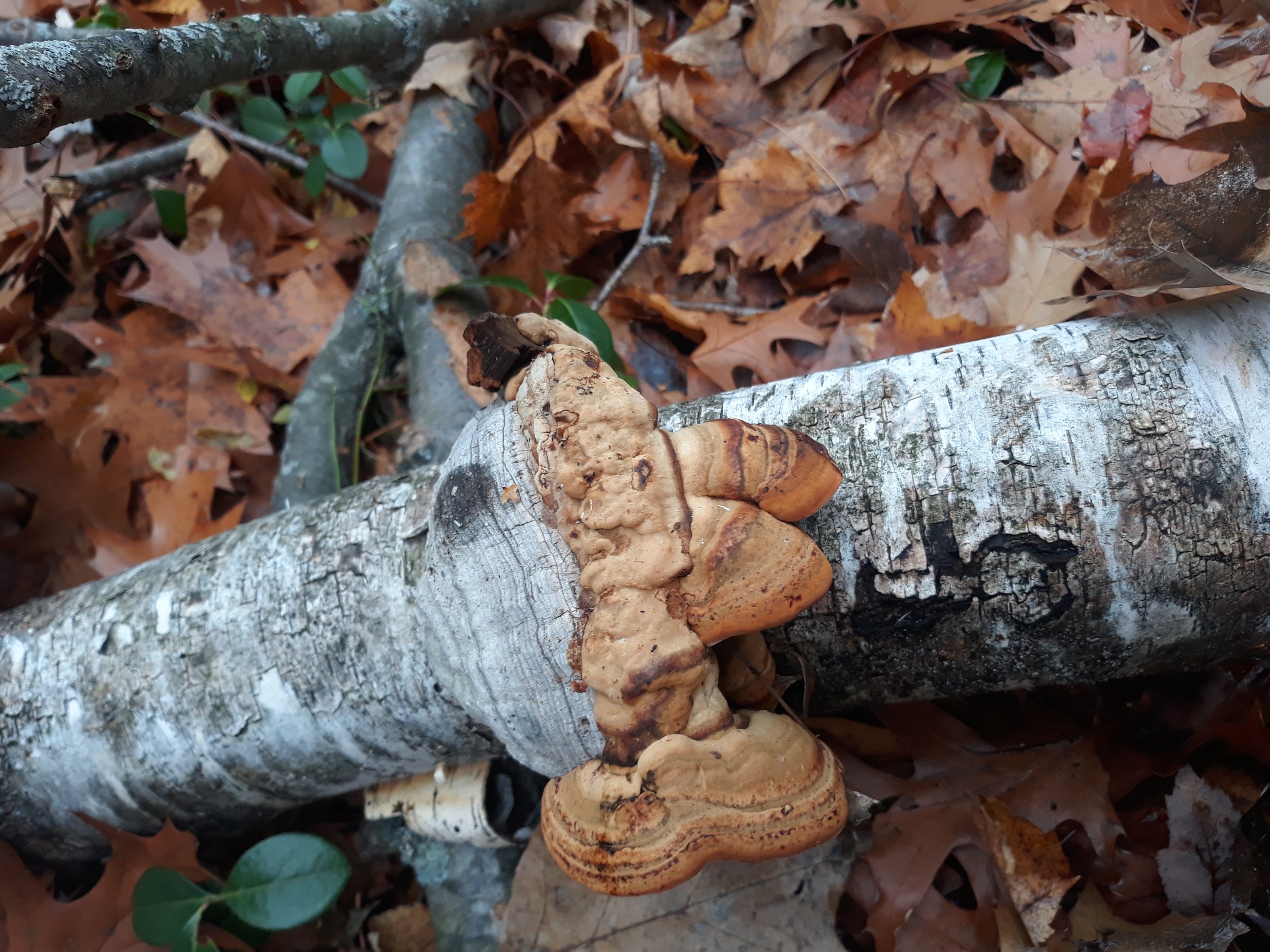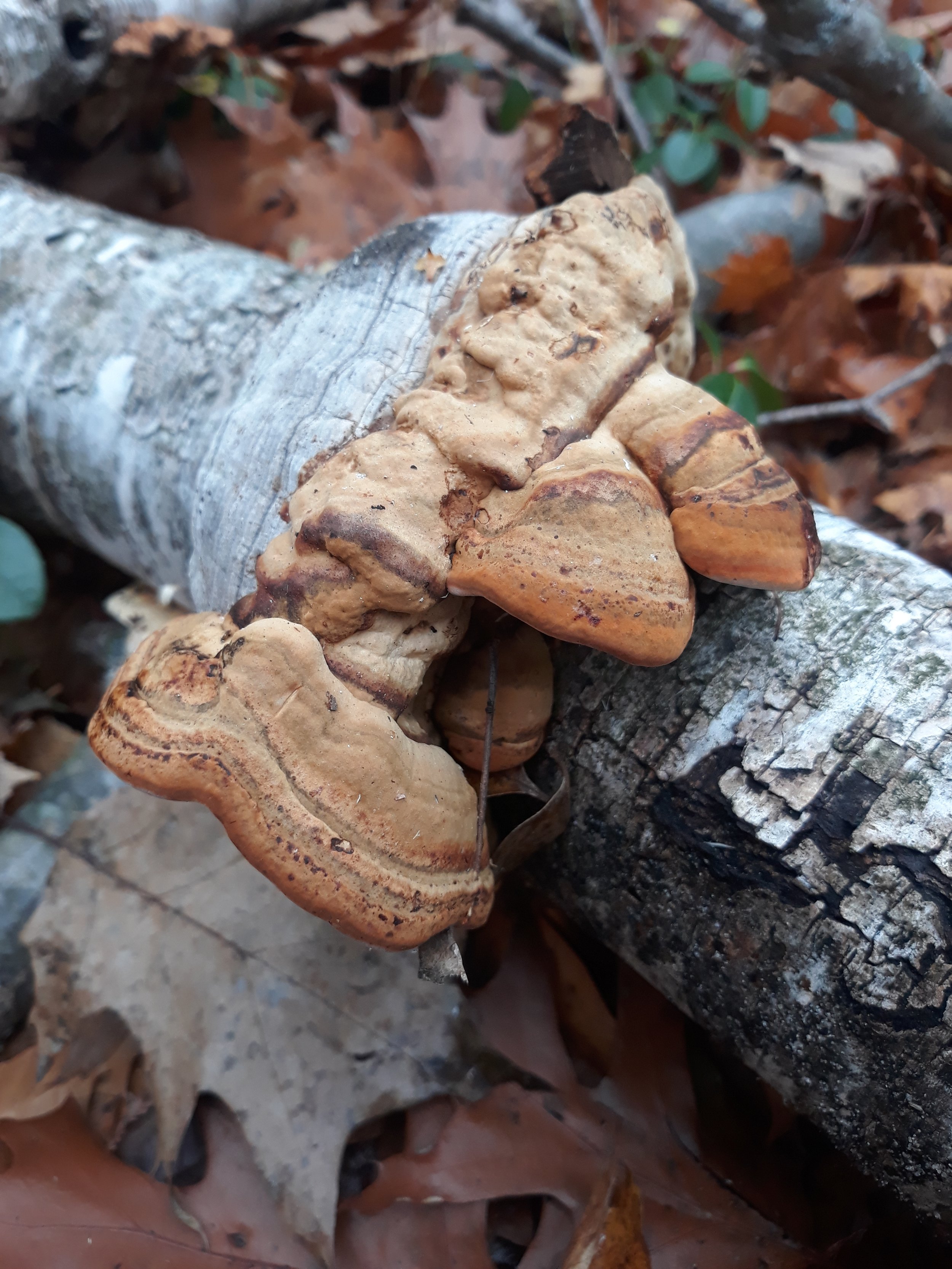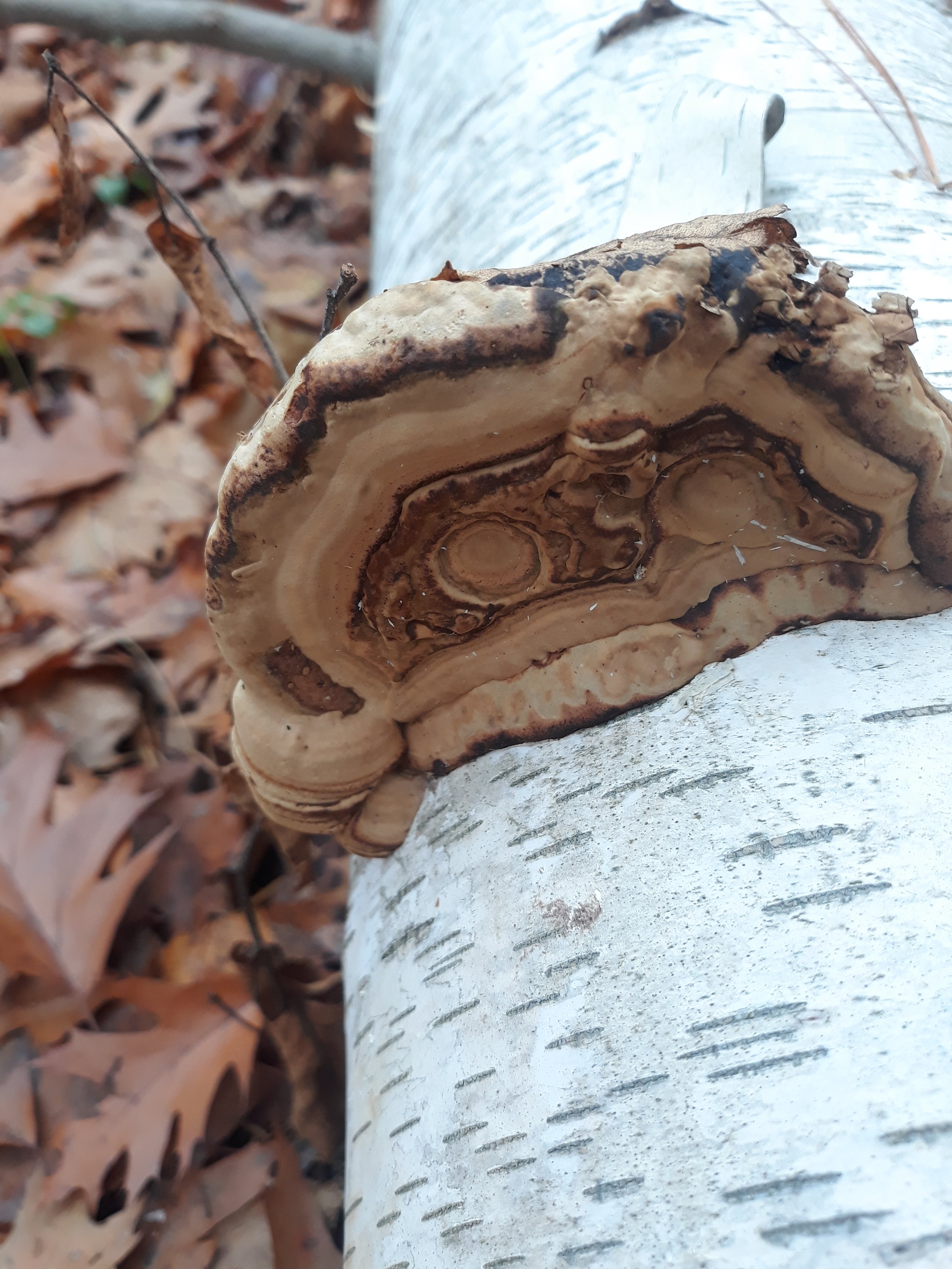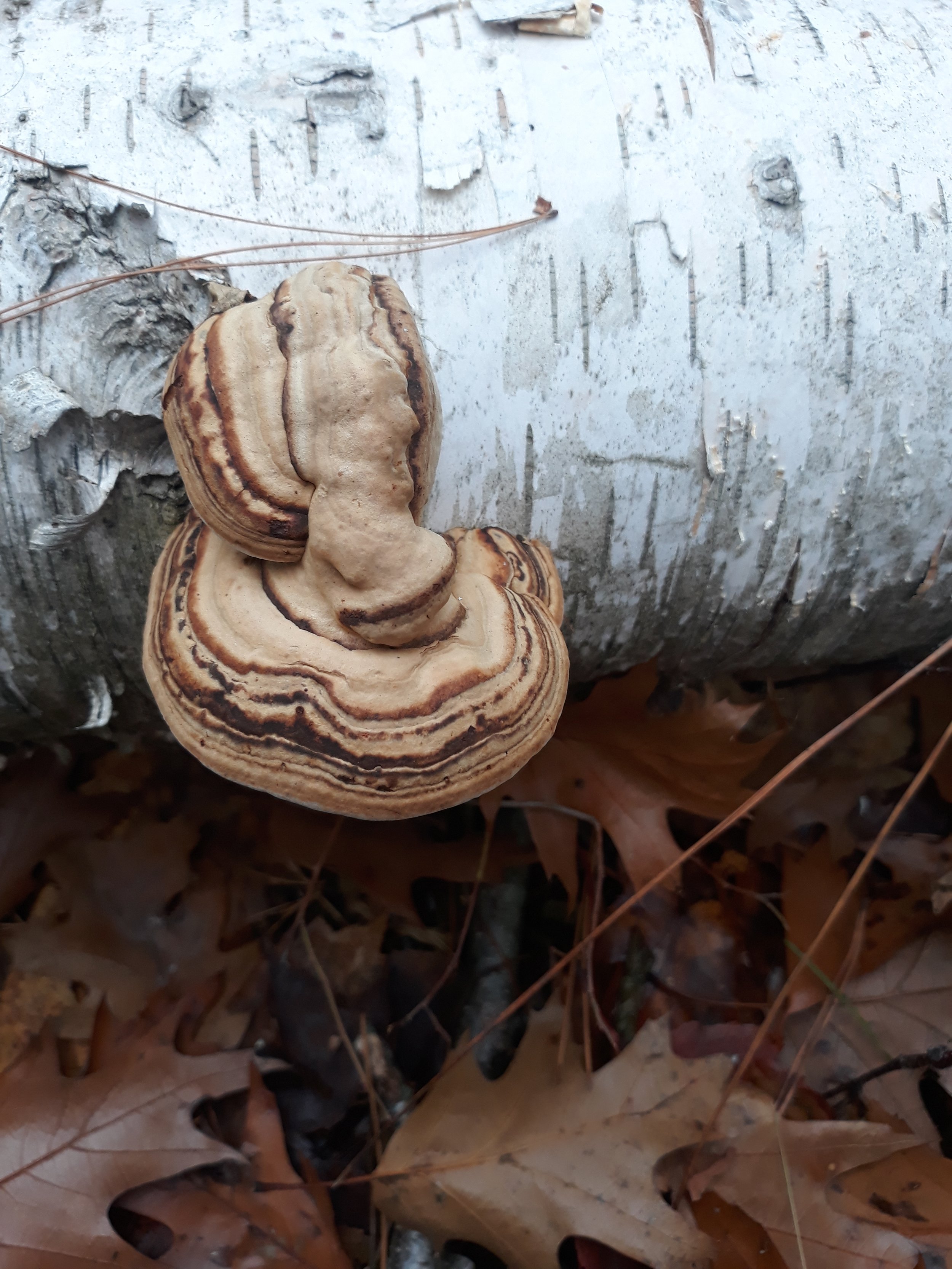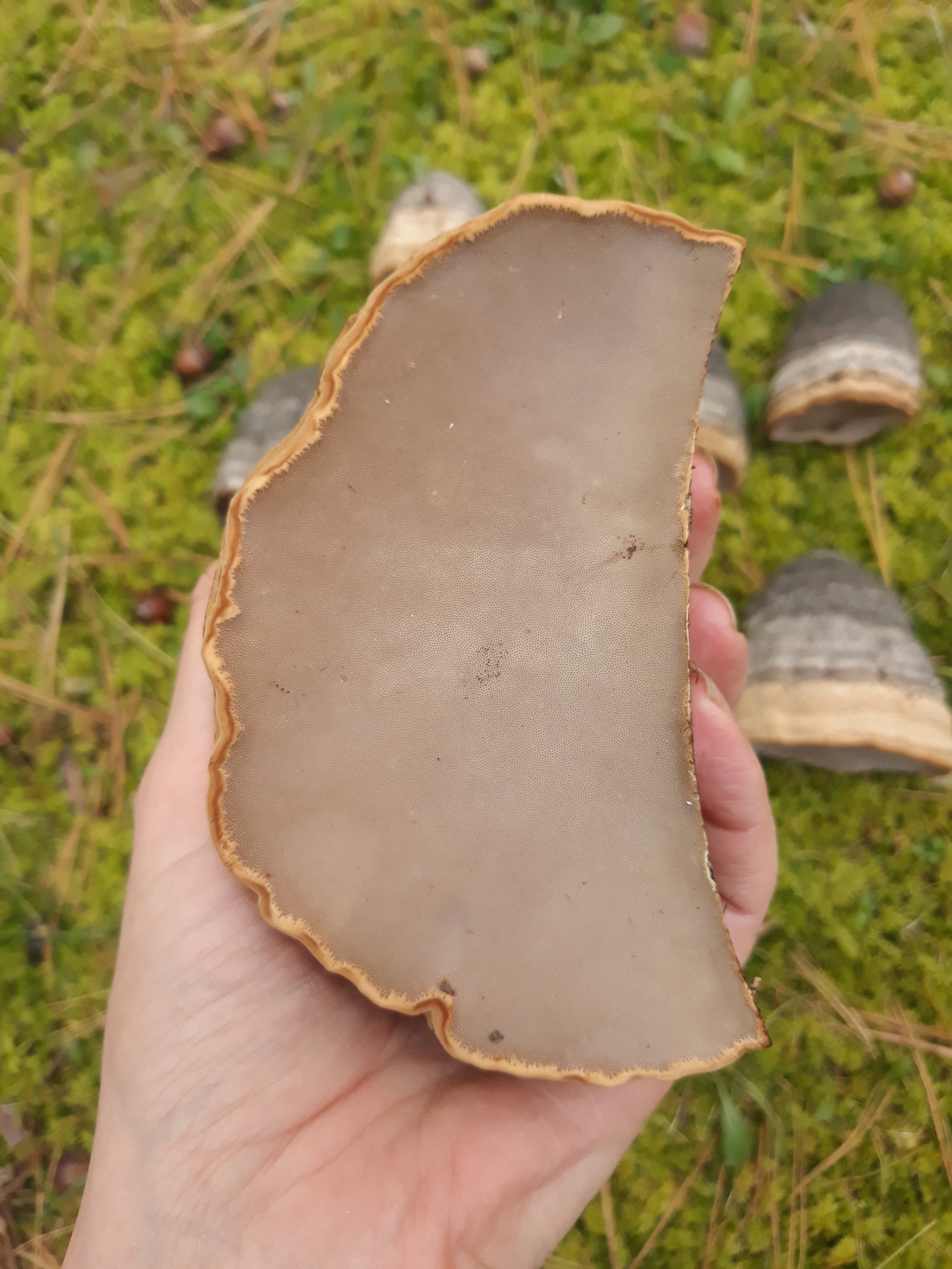Fungi Monographs: Fomes fomentarius
An unusual bell-shaped Fomes fomentarius hangs off a dead birch log. Most will cling to the tree upright, but many are found growing in various directions on fallen logs.
Modern science is still catching up analyzing the ancient wisdom carried by our ancestors since the night of time. Fomes fomentarius may be one of the earliest fungi used by mankind, remnants of it have been found in excavations of Mesolithic campsites- all the way back to 8,000 BCE! Hippocrates mentions this fungus for treating inflammation and cauterizing wounds. During the 1990’s, a frozen body of an ancient man (Known as Otzi the Ice Man) dating back over 3,000 years was discovered carrying both Fomes fomentarius and Piptoporus betulina. Much speculation has ensued on whether the mushrooms were carried as a fire starter (hence the common name Tinder Conk), or whether they were being used medicinally. This fungal friend goes by many names- Tinder conk/tinder fungus/ hoof fungus. Fomes is latin for “tinder” and fomentarius means “used as tinder” translating into “tinder used as tinder”- a fair name for a fungus that has been used to start and carry fires!
Freshly harvested Fomes fomentarius waiting to be dried and processed into various extracts.
Known around the world, this familiar fungi found in our North American forests has also been used in traditional Chinese, Japanese and Ayurvedic medicine. This fungi has been found growing in Europe, Africa, Asia and North America. This species commonly grows on Birch and Beech trees in North America, but around the world grows on various host trees, typically hardwoods. Fomes fomentarius is a perennial fungus, remaining year after year on the tree. Fruiting bodies can live up to 30 years, although they often start by parasitizing a host tree, they will continue to grow for years on the tree after they have died. Mushrooms appear like a hoof on the tree, and are colored with layers of whites, gray and browns. As a polypore mushroom, it lacks gills, and instead has a series of pores on the bottom where the spores are released. Each year, new layers of tubes are produced, resulting in the growth bands in the appearance of the mushroom. Young mushrooms start out small, but often grow to several inches across after many years.
It is an exciting time in the world of mycology- mushrooms are finally getting the attention they deserve, more and more studies are being conducted on their chemical constituents and benefits, often validating ancient folk knowledge and uses of these wonderful medicinal beings. Ancient Ayurveda made use of this mushroom as a diuretic, laxative, and nerve tonic, while also using it topically for wounds and burn. Chinese traditional medicine uses it to warm the lungs and soothe vital energy. In Japan, a tea is made from this mushroom for colds, flu, bronchitis and respiratory issues as well as for treating wounds. In vitro and in vivo experiments have demonstrated this fungus possesses antibacterial, anti tumour antimicrobial and antiviral activity. Isolated polysaccharides have been shown to inhibit tumors in mice. Direct anti-proliferative effects on human cancer cells have been demonstrated on human gastric cancer cells when treated with fomes fomentarius extracts. In vitro studies by Paul Stamets have found fomes fomentarius was able to inhibit e. Coli bacteria.
This mushroom has been used not only medicinally, but a felt like cloth can be made by processing the inner fibers of mushroom and is used for hats, clothing and tools, this felt is called amadou in Europe and is common in Romania.
Very old decaying conks on a fallen birch. Fomes time on this log has passed and other fungi have also started to colonize the tree (Trametes spp. mushrooms on right side of log).
We love this mushroom for its medicinal properties as well as its cosmetic benefits. According to research by renown mycologist Robert Rogers, author of The Fungal Pharmacy,“The conk has applications in cosmetic preparations for the treatment and repair of signs of aging. Various mucopolysaccharides and flavonoids are free radical scavengers, while various saponins exhibit anti-phlogistic action. Cyclic adenosine monophosphate is also present, and shows effectiveness in preventing skin cell aging. It may act as a secondary messenger for metabolic processes in the deeper dermal levels to prevent cellular change and retard skin breakdown.”
One of several products we make featuring a Fomes fomentarius polysaccharide extraction.
Harvest and Usage:
Select conks with fresh pores on the bottom for medicinal use, but avoid taking from live trees, as removing conks can create further openings for fungi and other pathogens to enter the tree. Birch often stand for years after dying, and will often become covered with conks before falling to the ground.
For information on how to make a medicinal tea with this mushroom, click here.
Below are some photos demonstrating the variation in appearance of Fomes fomentarius. The first few pictures are very average looking specimen. The last few pictures show a dead birch that fell down over the summer. It had been dead for years already and was heavily colonized by Fomes fomentarius already. After falling, new growth appeared off of many already formed conks, you can see the new growth obeying gravity and sometimes swallowing and older conk and growing over it. Young mushrooms are often a spectrum of browns as seen below. Click on the right to reveal more photos.
Sources:
Roussel B, Rapior S, Charlot C, Masson CL, Boutié P. Histoire des utilisations thérapeutiques de l'amadouvier, Fomes fomentarius (L. :Fr.) Fr [History of the therapeutic uses of the tinder polypore, Fomes fomentarius (L. : Fr]. Rev Hist Pharm (Paris). 2002;50(336):599-614. French. PMID: 12712985.
Gáper J, Gáperová S, Pristas P, Naplavova K. Medicinal Value and Taxonomy of the Tinder Polypore, Fomes fomentarius (Agaricomycetes): A Review. Int J Med Mushrooms. 2016;18(10):851-859. doi: 10.1615/intjmedmushrooms.v18.i10.10. PMID: 27910753.
Lee SO, Lee MH, Lee KR, Lee EO, Lee HJ. Fomes fomentarius Ethanol Extract Exerts Inhibition of Cell Growth and Motility Induction of Apoptosis via Targeting AKT in Human Breast Cancer MDA-MB-231 Cells. Int J Mol Sci. 2019 Mar 6;20(5):1147. doi: 10.3390/ijms20051147. PMID: 30845749; PMCID: PMC6429104.
Roussel, Bertrand & Rapior, Sylvie & Masson, C.-L & Boutié, P.. (2002). Fomes fomentarius (L.: Fr.) Fr.: A mushroom with varied uses. Cryptogamie, Mycologie. 23. 349-366.
Gedik, Gulsah, et al. "Effect of gel formulation obtained from Fomes fomentarius on bleeding and clotting time: A pilot study." Journal of the Faculty of Pharmacy of Istanbul University, vol. 50, no. 3.
Bal, Celal & Akgül, Hasan. (2018). Pharmacological properties of Fomes fomentarius.
Rogers, Robert. The Fungal Pharmacy, The Complete Guide To Medicinal Mushrooms and Lichens of North America, North Atlantic Books, 2011





